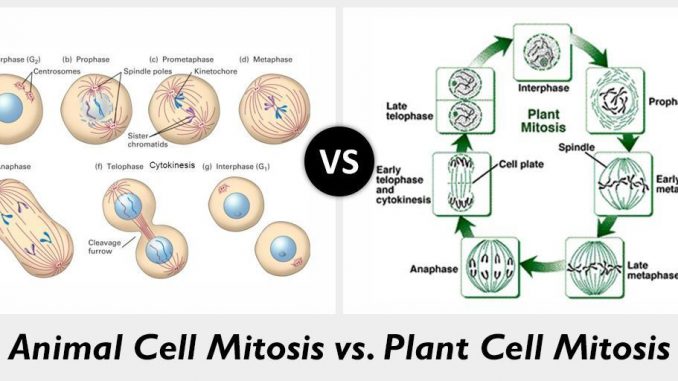
| S.N. | Mitosis in Animal cells | Mitosis in Plant cells |
| 1. | Centrioles are present at the spindle poles. | Centrioles are lacking at the spindle poles. |
| 2. | Asters are formed (amphiastral). | No asters are formed (anastral). |
| 3. | Cytokinesis occurs by furrowing of the cytoplasm. | Cytokinesis mostly occurs by cell plate formation. |
| 4. | Furrow extends centripetally. | Cell plate grows centrifugally. |
| 5. | Microfilament ring brings about the cleavage. | Microfilaments have no role in cytokinesis. |
| 6. | It occurs nearly in all tissues. | It mainly occurs at the meristems. |
| 7. | Cell doesn’t change its form or nature during mitosis. | Cell becomes rounded and its cytoplasm gets more viscous during mitosis. |
| 8. | Mid-body is formed at the equator of the spindle. | Equator of the spindle changes into phragmoplast. |
| 9. | Intercellular spaces appear between the daughter cells. | Daughter cells remain adhered together by middle lamella. |
| 10. | Mitosis in animal cells is controlled by certain mitogens. | In plant cells, mitosis is controlled by a hormone cytokinin. |